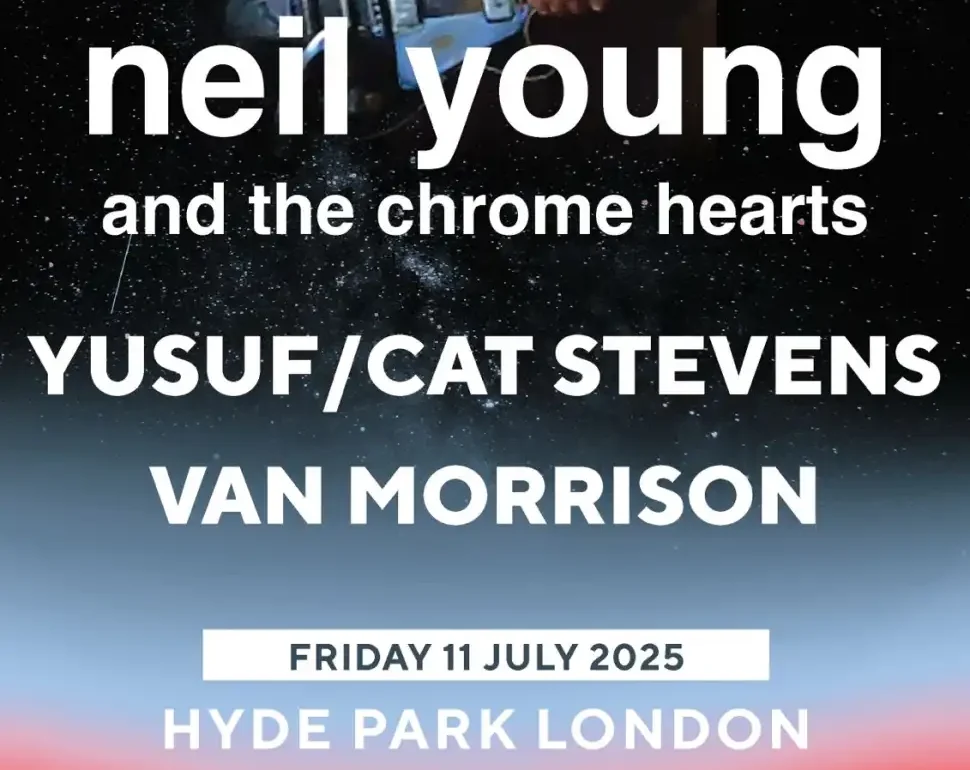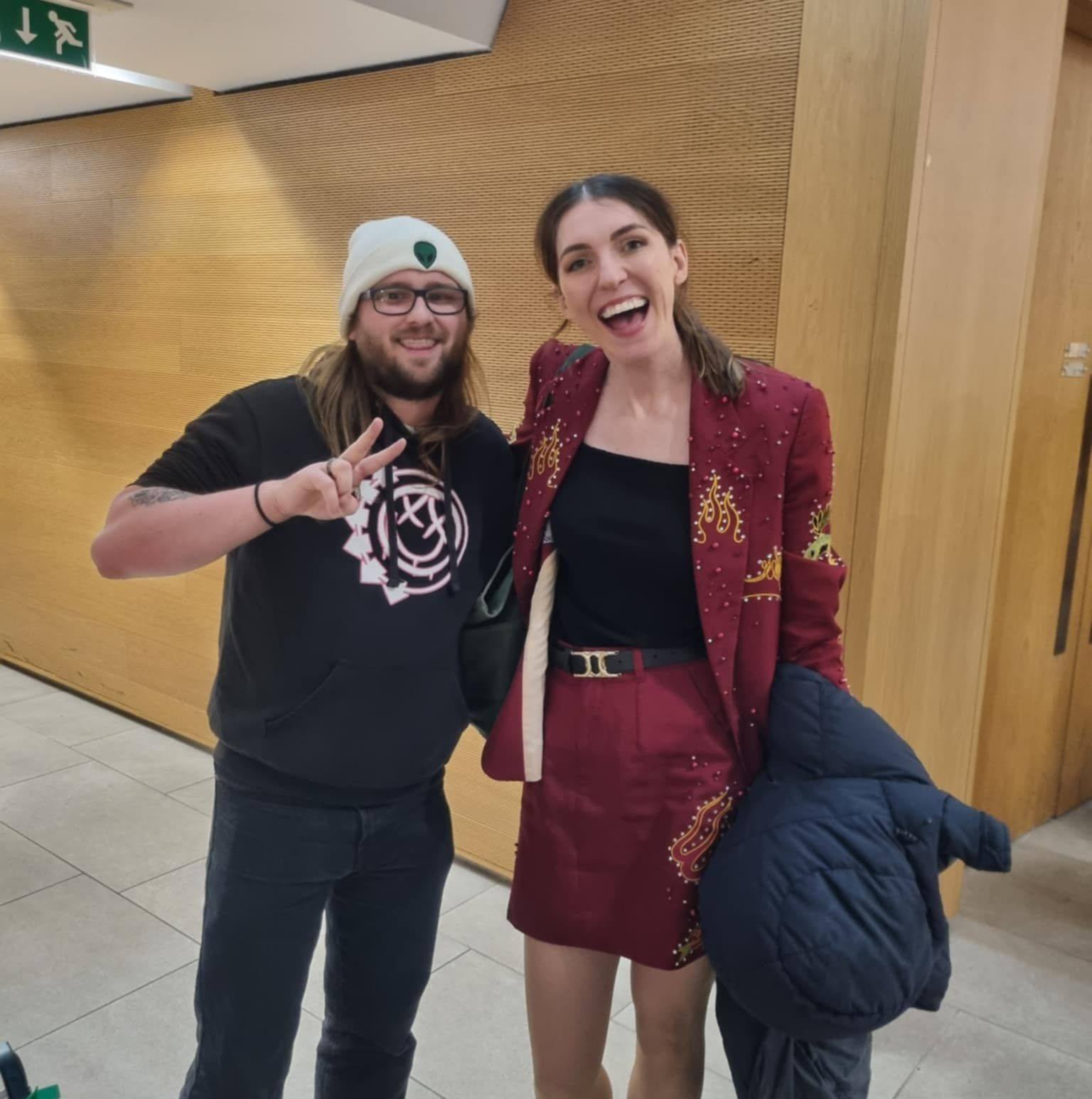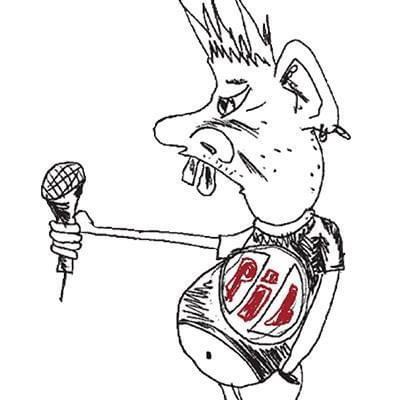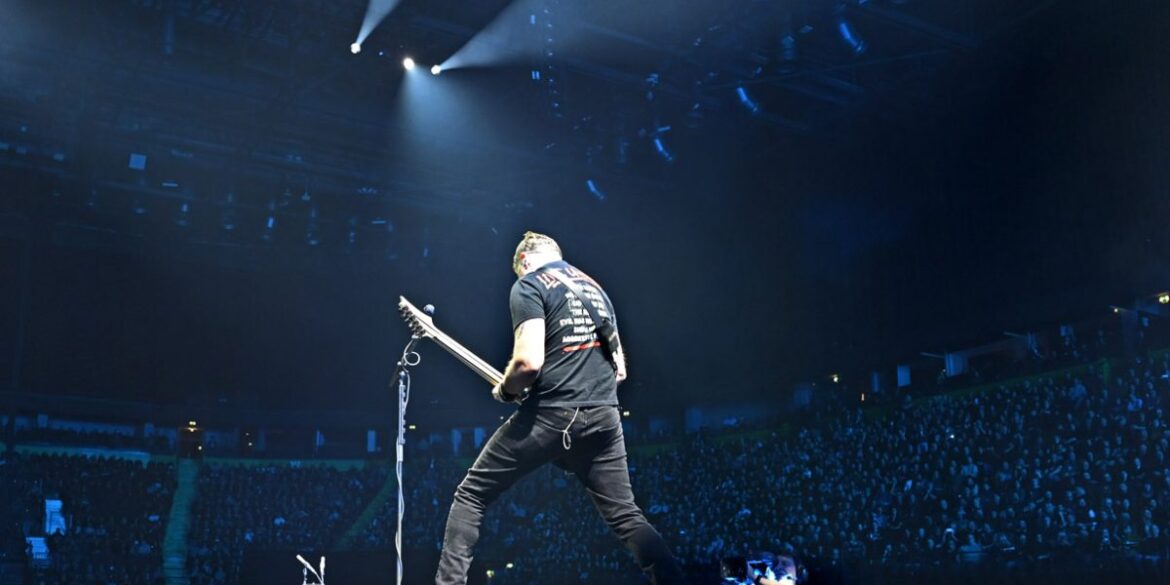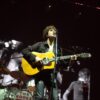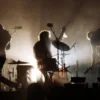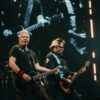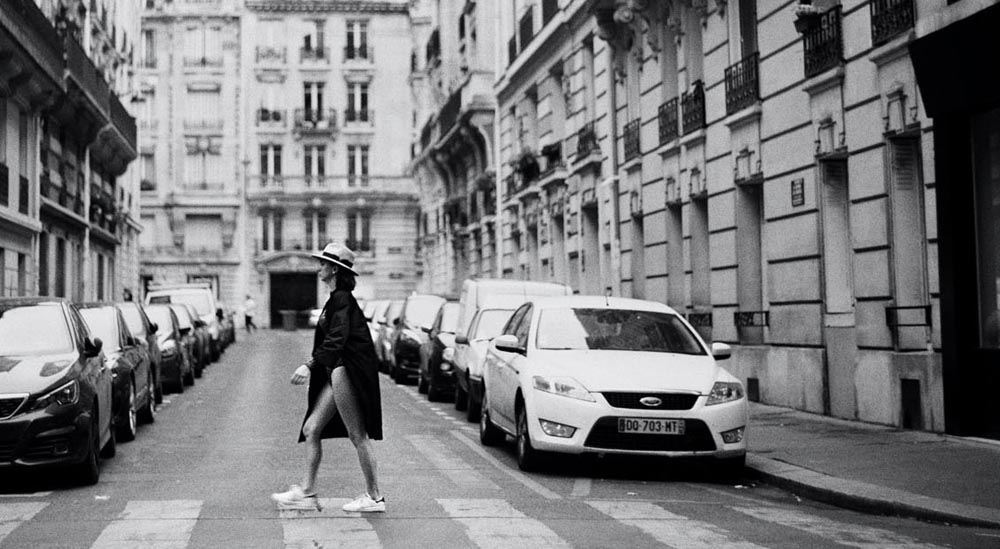There are very few artists still alive today who can truly be called legends. While many of the up-and-coming artists of the ’90s and 2000s are slowly working their way towards that status, we seem to be in a strange transitional period of music history. The household names of our parents’ and grandparents’ generations are either no longer with us or touring very little, while newer artists have not quite taken their place yet. To stumble upon one of the remaining true legends performing live in 2025 feels rare and precious. Today, at Hyde Park’s British Summer Time festival, NDR is about to witness just that, the uncompromising, unpredictable Neil Young.
To say that Neil Young has had a huge influence on me, both as a music fan and as someone who thinks deeply about what songwriting can mean, would be the understatement of the century. He has carved his way into music history not through polish or industry calculation but through sheer stubborn exploration. That thought is cemented as I make my way, a little behind schedule, to the legendary Hyde Park stage where BST has hosted so many generational moments. The crowd gathered tonight is a patchwork of music culture in itself: grizzled old-timers who will casually tell you how they saw Zeppelin in some cramped club decades ago, younger music heads who probably watch Fantano reviews religiously, plus everyone else orbiting the space in between. It is a rare mingling of tribes, yet every person present is here for the same reason: to see one of the greatest living artists in the flesh.
Drifting through the grounds, I arrive just in time to catch much of Yusuf/Cat Stevens’ set. Even from a distance, his presence is serene. As I get closer, I am halted by a moving Palestine tribute during “Little Ones”. On the big screens, imagery interweaves with Yusuf’s performance, and the atmosphere turns heavy with emotion. Around me, many are visibly affected, tears appearing in the eyes of both young and old. It is a reminder of music’s other role beyond entertainment.
Stevens does not linger in that sentiment for too long, however. Soon he shifts into classic jaunts, “Wild World” and “Peace Train”. These songs, already etched into collective consciousness, bounce warmly around the park in the mid-afternoon sun. They may not arrive in perfect form; his voice has aged, the high notes crumple slightly, but this age paradoxically complements the songs. The imperfections ripple with lived experience, lending a humility to the words that feels utterly fitting. The wisdom of age turns the message of these tracks into something far richer.
As Stevens exits the stage to vibrant applause, conversations ripple through the crowd. People exchange comments about how remarkable it is that this man, who first shaped youth culture in the 1970s, still stands there giving everything he has. There is admiration, gratitude, and a clear acknowledgement of witnessing something that is quietly historic.
Yet the atmosphere now shifts. Patience begins to wear thin. People refill drinks, shuffle forward, stake their claim to ground nearer the stage. Because while Yusuf may be revered, the air carries a different, sharper charge when Neil Young is on the horizon. His shows are never predictable, and his reputation for following his own instincts means there are both nerves and excitement around what exactly he will choose to unleash tonight. There is no doubt in anyone’s mind that we are about to witness something singular.
Sure enough, after a long shuffle of stagehands, the lights drop into dim tones, and Neil himself appears aged, stooped slightly, but unmistakable. Without ceremony, he sits, guitar resting across his lap, and strikes the opening notes of “Ambulance Blues”. It is an unexpected way to begin: slow, meandering, delicate, filled with a vulnerability that does not immediately fit the festival atmosphere. The crowd’s reaction is mixed at first. Some people fidget impatiently, others crane forward, attentive, trying to tune themselves to his wavelength. Slowly but surely, though, the spell takes hold. By the time the final notes fade, what began as confusion has become reverence. Neil looks older, frailer, but the delivery has an uncanny gravity; fragility itself takes on a strange form of power.
And then, without pause, the gears shift violently. The sudden thump of “Cowgirl in the Sand” tears through the park, guitars roaring into life, and the crowd erupts. Any sense of stillness collapses. Chrome Hearts, his current backing band and by many accounts his strongest in years, attack the track with feral joy. The younger musicians bounce and swagger across the stage, their visible exuberance feeding straight into Neil, who seems to shed decades under the lights.
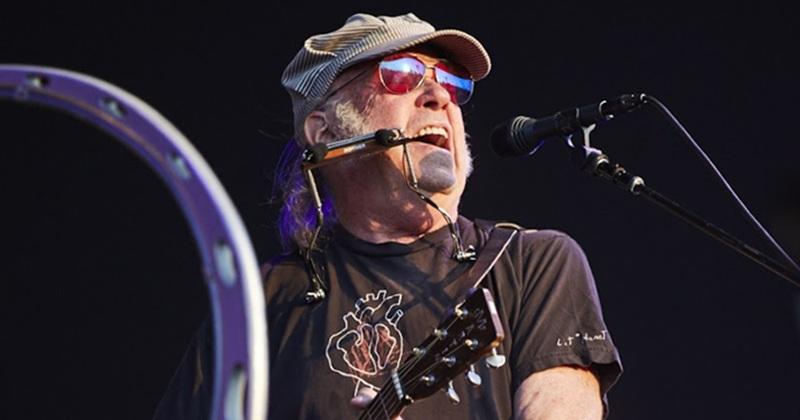
Neil Young – Liz Gander
What strikes immediately is the way the band interact not with us, the crowd, but almost exclusively with each other. Instead of pandering outward, they form packs within the performance, locking into duelling stances, leaning in toward one another as if engaged in some private sparring match of noise. It feels borrowed less from polished arena rock than from Nashville jam sessions, where appreciation is shown not by bowing to the audience but by seeing how joyfully you can push and pull each other into new territory. It is playful, it is fiery, and thanks to the enormous BST screens magnifying every grin and nod, the connection on stage becomes as entertaining as any direct attempt to impress us.
And then there is that tone. The unmistakable, fuzz-soaked voice of Neil’s Les Paul screeches and bellows exactly as it always has. It is neither neat nor modern but timeless, as though someone bottled the very essence of an amplifier buckling under strain. Watching him close up, his fingers doing that peculiar combination of thumb-thumping, string pinching and outright hacking at the guitar, is a masterclass in how imperfection becomes character. Every jagged bend or strained pull feeds directly into the emotional weight of those solos. They are not clean, they are not pretty, but they are alive.
The setlist tilts far more toward fan service than I expected. In quick succession, we are treated to “Cinnamon Girl”, “Southern Man”, “The Needle”, “The Damage Done”, “Harvest Moon”, “Old Man” and more. The crowd roars at each first note, thousands singing choruses together under the evening sky. There is a manic electricity, people realising they are hearing some of the most beloved, tattooed-onto-history songs alive and raw right in front of them.
For me, the peak arrives when Neil takes to the organ alone for a stripped-back rendition of “After the Gold Rush”. Under the shadow of the giant screen, every line trembles with the weight of his voice. He looks small up there, hunched slightly, fragile, yet completely commanding. The hush that falls over Hyde Park is remarkable, tens of thousands of people stilled by one fragile man at an organ. It is a performance that undercuts every stereotype about rock stars and legends. He does not need grandeur. He just needs honesty.
Immediately after, he slams the gears again with explosive versions of “Love to Burn” and “Hey Hey, My My”. The weight and distortion send the grass quivering. It is sonic whiplash of the best kind: one moment meditative stillness, the next scorching attacks of feedback and fire.
By the end of the night, curfew looms, but Neil refuses to let things wrap tidily. “Rockin’ in the Free World” is extended into something unpredictable, a shape-shifting wall of noise. The band stop abruptly multiple times to mock-ending cheers, only to crash back in with grins, wringing out every last drop of adrenaline. They repeat the trick again and again until, finally, power is cut entirely and they are forced offstage, still smiling, still jamming, leaving us dazed.
Walking slowly toward the exit gates, my ears ringing in pleasant shock, I consider the double header we have just witnessed. Yusuf/Cat Stevens embodied quiet resilience, showing how age can add depth to already wise songs. Neil Young, meanwhile, swung wildly between vulnerability and violence, between the frail and the ferocious, ripping open sound and collapsing into silence in equal measure. Together, their sets painted something profound. Legends are not perfect. They do not need to be. They simply stand as living reminders of what music can do when it is carried honestly through decades of life.
Hyde Park BST has hosted many great shows over the years, but few have felt this simultaneously historic and human. Two artists of incredible stature are proving that not only do they still have something left to give, but that the scars of age can be as meaningful in music as the shine of youth. Tonight was not just about nostalgia. It was about endurance, about resilience, about truth in song.
Legend is a word thrown around too loosely these days. But tonight in London, watching Neil Young howl his guitar into the night sky, watching Yusuf smile gently through songs of peace, you understood what it still means.


